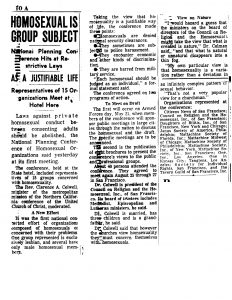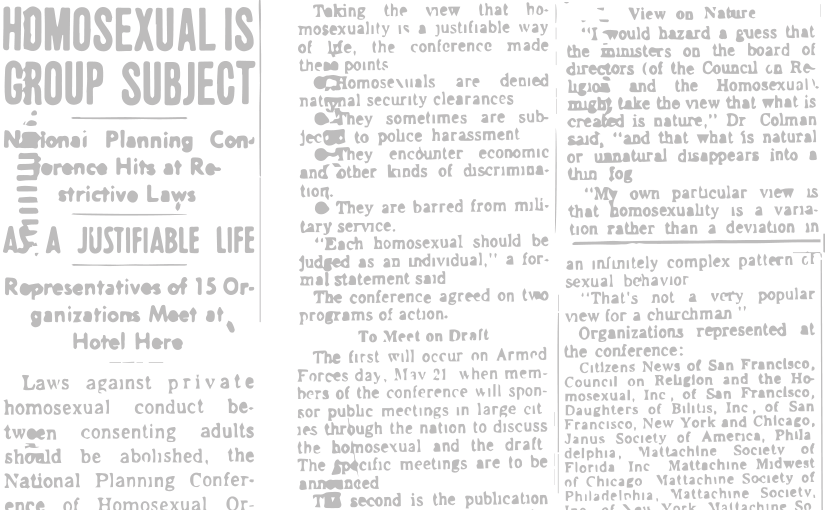The National Planning Conference
of Homophile Organizations

After years of working independently, delegates from fifteen homophile organizations met together for the first time in February 1966 in Kansas City. The activists considered several cities but chose Kansas City because of its central location and vibrant social scene.
The meeting proved crucial. By this point many recognized the need for a nationally focused organization to combat widespread discrimination. The goals of the Kansas City meeting, which became known as the National Planning Conference of Homophile Organizations, were to find common ground, collaborate, and organize nationally. At the two-day gathering attendees adopted a national strategy program that established a legal defense fund and planned coordinated demonstrations for equal rights. They also signed a unified policy statement, which created an association among the groups for the first time.
Despite these accomplishments, the new movement was constantly threatened by personality conflicts and ideological disagreements. Should homophile organizations work independently or merge together? Should the goal be to earn greater respect from society or demand more equal rights? The debates left many wondering if a national movement was even possible.
“We need first a clear, consistent, coordinated, positive philosophy and ideology, vigorously and actively propounded publically at every opportunity.”
—Frank Kameny, Mattachine Society Washington, 1966


